Worried about the impact of winter weather affecting the operation of your outdoor digital advertising? Armagard’s essential guide provides some top tips.
Did you know? A widely reported leaked memo reveals that winter temperatures in countries all over the world are getting colder every year, with freezing temperatures set to plummet further over the next 15 years.
The impact of such adverse weather conditions on outdoor digital advertising displays is an issue of concern to companies that have invested in an outdoor advertising solution.
Visual pitfalls
According to Digital Signage Today, it’s estimated that LCD advertising screen displays will lose somewhere between 10 and 15 percent brightness in cold conditions. Screen visibility, particularly in the winter months, is of crucial importance.
Winter months mean that darkness sets in earlier and should your outdoor advertising display fail to emit sufficient light due to the freezing temperatures, the chances of it being seen are reduced.
It is not only cold weather that can hinder the effectiveness of an outdoor advertising display in winter, the winter sun also creates problems when it comes to screen visibility. Displays that are positioned in the path of the sun will often suffer with glare issues and even screen damage.
Known as ‘Solar Clearing’, direct sunlight combined with a unit’s backlight operating at full brightness, means that LCD screen crystals absorb a significant amount of heat.
This heat can cause LCD screens to display black blotches. Solar Clearing will, over time, corrupt the display and reduce the operating life.
Overcoming visual pitfalls
Armagard recommends investing in a ‘high brightness’ unit. High brightness screens provide greater clarity not only in the dark, but also in daylight, enhancing visibility and eliminating the problem of ‘losing’ light.
Using LED technology to generate light, high brightness units represent a better alternative to LCD screens, which tend to use fluorescent light technology.
Fluorescent lighting systems generate a lot of heat and require far more power to operate when compared with LED technology, which is far more frequently used in high brightness advertising units as it requires less power to function and produces less heat.
High brightness units also help to combat the effects of glare as they feature greater candela* values than a standard LCD display. The winter sun is often more intense as skies are clearer and direct sunlight, light reflection from ice and rainfall results in increased glare.
High brightness screens represent an ideal solution for combating glare from direct sunlight, especially outdoors; it is simply a case of the brighter the outdoor area, the brighter the screen required.
It may seem unusual, but high bright units are required in locations where direct sunlight affects screen visibility. To avoid ‘Solar Clearing’ it’s recommended that displays are positioned in a North/South Orientation in order to lessen the impact of direct sunlight in winter.
*Candela unit explained
Derived from the word candle, the candela is the Standard International (SI) base unit used to signify luminous intensity; that is, the power emitted by a light source in a particular direction.
Weather pitfalls
Winter weather is unpredictable and poses a whole series of problems for outdoor digital signage displays, both internally and externally.
Examples of potential internal problems for outdoor digital advertising displays caused by winter weather:
- Vital components freezing
- Water penetration from the forming and melting of ice/snow
Examples of potential external problems for outdoor digital advertising displays caused by winter weather:
- Freezing temperatures make for hazardous road conditions and it has been known for outdoor signage displays positioned close to roads to have suffered heavy impact from vehicles leaving the carriageway due to ice/snow on the road
- Screen damage caused by the forming of ice, hail storms and snow drifts
Overcoming weather pitfalls
Armagard recommends protecting outdoor digital advertising signage from adverse winter weather conditions by encasing display screens and accompanying hardware in a digital signage enclosure specifically designed to withstand the elements.
How do digital signage enclosures protect against winter weather?
External protection – Depending on the IP or NEMA* rating, the majority of outdoor digital signage enclosures are designed to cope with the formation of ice on the enclosure itself. Special sealants are usually applied to prevent water penetration thus; this external protection prevents ice from forming within the enclosure.
Internal protection – Outdoor digital signage enclosures can be equipped to feature heating systems and insulation, creating the perfect environment to accommodate digital advertising display screens and other hardware.
Having a heating system and insulation fitted inside an enclosure protects against the effects of freezing, maintaining the functionality of the equipment inside. Heating and insulation systems help to sustain a minimum internal temperature at which the enclosed equipment can operate.
*IP & NEMA ratings explained
IP ratings, or NEMA ratings, are used to show how well an enclosure protects against hazardous elements.
Taking IP ratings as an example, an enclosure with an IP54 rating means that it is rated at level 5 for protection against solids and level 4 for protection against liquids.
NEMA (National Electrical Manufacturers Association) is the North American equivalent of the IP system. Using the example above, the NEMA equivalent of IP54 is a rating of NEMA 3.
For protection against sub-zero temperatures, enclosures with a NEMA rating between 3 and 6 are most likely to be used. The IP equivalents would be enclosures with one of the following IP ratings:
- IP54
- IP56
- IP66
- IP67
Armagard digital signage enclosures
If you’ve invested in an outdoor digital advertising display the chances are you want to protect it. The absence of protection will lead to constantly incurring costs to repair or replace damaged outdoor advertising displays.
Save yourself time and money and invest in an Armagard digital signage enclosure. Our enclosures provide supreme protection, not only against winter weather conditions, but other environmental elements and human elements such as vandalism and theft.
Armagard’s top performing outdoor enclosures include:
The ‘Totem’ LCD Screen Enclosure
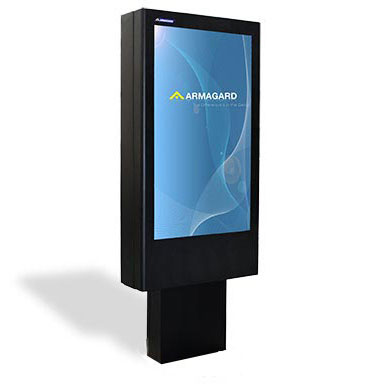
As a recent addition to the Armagard range the ‘Totem’ LCD screen enclosure represents a superb example of outdoor signage protection.
Sleek & stylish in design, the totem outdoor enclosure provides a contemporary, attractive solution for outdoor use. It is used in a variety of outdoor locations, including transport hubs, university campuses, drive-thru facilities and at the roadside.
LCD Screen Monitor Enclosure
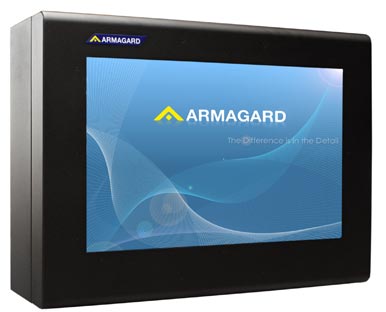
Designed to accommodate LCD screens ranging from 19” to 70”, Armagard’s LCD screen monitor enclosure is proven to provide supreme protection in temperatures as low as -30°C.
Sealed to a NEMA 4 rating, the LCD screen monitor enclosure is suitable for indoor and outdoor environments where freezing temperatures can occur.
Don’t let winter’s wrath wreck your outdoor advertising display, contact Armagard today via our online enquiry form – www.armagard.com – or alternatively, contact 1-866-434-0807 to speak to a member of our expert sales team.



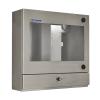
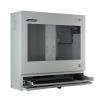
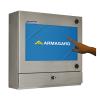
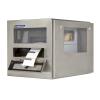
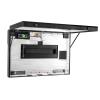
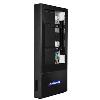
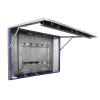
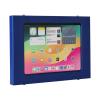
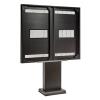
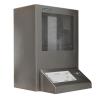






Comments are closed.